Modeling the Tensile Behavior of Fiber-Reinforced Strain-Hardening Cement-Based Composites: A Review
Abstract
:1. Introduction
2. Factors Influencing the Mechanical Behavior of the Material
2.1. Fiber Pullout
2.2. Matrix Strength
2.3. Fiber Content/Group Effect
2.4. Fiber Embedded Length
2.5. Fiber Length and Diameter
2.6. Fiber Orientation
2.7. Fiber Distribution Effect
2.8. Fiber Hybridization
2.9. Size Effect
2.10. Preparation of Fiber-Reinforced Compositions
3. Analytical Modeling Methodologies
3.1. Micromechanical Models
3.2. Stress-Crack Opening Curve Based on Micromechanical
3.2.1. Matrix Stress
3.2.2. Fiber Prestress
3.2.3. Fiber Bridging Action
3.2.4. Modeling Multiple Cracking
4. Current Challenges and Future Research Needs
5. Final Remarks
Author Contributions
Funding
Institutional Review Board Statement
Informed Consent Statement
Data Availability Statement
Conflicts of Interest
References
- Jun, P.; Mechtcherine, V. Behaviour of strain-hardening cement-based composites (SHCC) under monotonic and cyclic tensile loading: Part 1—Experimental investigations. Cem. Concr. Compos. 2010, 32, 801–809. [Google Scholar] [CrossRef]
- Fehling, E.; Schmidt, M.; Walraven, J.; Leutbecher, T.; Fröhlich, S. Ultra-High Performance Concrete UHPC; Ernst & Sohn: Berlin, Germany, 2014. [Google Scholar]
- Krahl, P.A.; Carrazedo, R.; El Debs, M.K. Mechanical damage evolution in UHPFRC: Experimental and numerical investigation. Eng. Struct. 2018, 170, 63–77. [Google Scholar] [CrossRef]
- Duque, L.F.M.; Graybeal, B. Fiber orientation distribution and tensile mechanical response in UHPFRC. Mater. Struct. 2017, 50, 55. [Google Scholar] [CrossRef]
- Curosu, I.; Mechtcherine, V.; Forni, D.; Cadoni, E. Performance of various strain-hardening cement-based composites (SHCC) subject to uniaxial impact tensile loading. Cem. Concr. Res. 2017, 102, 16–28. [Google Scholar] [CrossRef]
- Wille, K.; Naaman, A.E. Fracture energy of UHP-FRC under direct tensile loading. In Proceedings of the FraMCoS-7 International Conference, Jeju Island, Korea, 23–28 May 2010; pp. 65–72. [Google Scholar]
- Li, V.C.; Wang, Y.; Backer, S. Effect of inclining angle, bundling and surface treatment on synthetic fibre pullout from a cement matrix. Composites 1990, 21, 132–140. [Google Scholar] [CrossRef]
- Li, V.C. Engineered Cementitious Composites (ECC): Bendable Concrete for Sustainable and Resilient Infrastructure; Springer: Berlin/Heidelberg, Germany, 2019. [Google Scholar]
- Abdallah, S.; Fan, M.; Zhou, X. Effect of hooked-end steel fibres geometry on pull-out behaviour of ultra-high performance concrete. World Acad. Sci. Eng. Technol. Int. J. Civ. Environ. Struct. Constr. Archit. Eng. 2016, 10, 1530–1535. [Google Scholar]
- Cao, Y.Y.Y.; Yu, Q.L. Effect of inclination angle on hooked end steel fiber pullout behavior in ultra-high performance concrete. Compos. Struct. 2018, 201, 151–160. [Google Scholar] [CrossRef]
- Gebuhr, G.; Pise, M.; Sarhil, M.; Anders, S.; Brands, D.; Schröder, J. Analysis and evaluation of the pull-out behavior of hooked steel fibers embedded in high and ultra-high performance concrete for calibration of numerical models. Struct. Concr. 2019, 20, 1254–1264. [Google Scholar] [CrossRef]
- Yoo, D.Y.; Chun, B.; Kim, J.J. Bond performance of abraded arch-type steel fibers in ultra-high-performance concrete. Cem. Concr. Compos. 2020, 109, 103538. [Google Scholar] [CrossRef]
- Wu, Z.; Khayat, K.H.; Shi, C. How do fiber shape and matrix composition affect fiber pullout behavior and flexural properties of UHPC? Cem. Concr. Compos. 2018, 90, 193–201. [Google Scholar] [CrossRef] [Green Version]
- Zhang, H.; Ji, T.; Lin, X. Pullout behavior of steel fibers with different shapes from ultra-high performance concrete (UHPC) prepared with granite powder under different curing conditions. Constr. Build. Mater. 2019, 211, 688–702. [Google Scholar] [CrossRef]
- Wille, K.; Naaman, A.E. Pullout Behavior of High-Strength Steel Fibers Embedded in Ultra-High-Performance Concrete. ACI Mater. J. 2012, 109, 479–487. [Google Scholar]
- Abu-Lebdeh, T.; Hamoush, S.; Heard, W.; Zornig, B. Effect of matrix strength on pullout behavior of steel fiber reinforced very-high strength concrete composites. Constr. Build. Mater. 2011, 25, 39–46. [Google Scholar] [CrossRef]
- Abrishambaf, A.; Pimentel, M.; Nunes, S. A meso-mechanical model to simulate the tensile behaviour of ultra-high performance fibre-reinforced cementitious composites. Compos. Struct. 2019, 222, 110911. [Google Scholar] [CrossRef]
- Zhou, B.; Uchida, Y. Relationship between fiber orientation/distribution and post-cracking behaviour in ultra-high-performance fiber-reinforced concrete (UHPFRC). Cem. Concr. Compos. 2017, 83, 66–75. [Google Scholar] [CrossRef]
- Oliveira, C.O. Estudo Numérico e Experimental da Distribuição das Fibras de aço Em Vigas de UHPFRC (Numerical and Experimental Study of Steel Fibers Distribution in UHPFRC Beams). Ph.D. Thesis, University of São Paulo, São Paulo, Brazil, 2019; 153p. (In Portuguese). [Google Scholar]
- Bitencourt, L.A., Jr.; Manzoli, O.L.; Bittencourt, T.N.; Vecchio, F.J. Numerical modeling of steel fiber reinforced concrete with a discrete and explicit representation of steel fibers. Int. J. Solids Struct. 2019, 159, 171–190. [Google Scholar] [CrossRef]
- Qsymah, A.M. In-Situ X-ray Computed Tomography Tests and Numerical Modelling of Ultra High Performance Fibre Reinforced Concrete. Ph.D. Thesis, The University of Manchester, Manchester, UK, 2016; 170p. [Google Scholar]
- Cunha, V.M.C.F.; Barros, J.A.O.; Sena-Cruz, J.M. An integrated approach for modelling the tensile behaviour of steel fibre reinforced self-compacting concrete. Cem. Concr. Res. 2011, 41, 64–76. [Google Scholar] [CrossRef] [Green Version]
- Soetens, T.; Matthys, S.; Taerwe, L.; Van Gysel, A. Basis of a Finite-Element Simulation Tool to Predict the Flexural Behavior of SFRC Prisms. In High Performance Fiber Reinforced Cement Composites 6; RILEM State of the Art Reports; Springer: Berlin/Heidelberg, Germany, 2012; Volume 2, pp. 91–98. [Google Scholar]
- NF P18-470 2016; Concrete-Ultra-High Performance Fiber-Reinforced Concrete-Specifications, Performance, Production and Conformity. AFNOR-French Standard Institute: Paris, France, 2016.
- Dutra, V.F.P.; Maghous, S.; Campos Filho, A. A homogenization approach to macroscopic strength criterion of steel fiber reinforced concrete. Cem. Concr. Res. 2013, 44, 34–45. [Google Scholar] [CrossRef]
- Lee, S.-C.; Cho, J.-Y.; Vecchio, F.J. Diverse embedment model for steel fiber-reinforced concrete in tension: Model development. ACI Mater. J. 2011, 108, 516. [Google Scholar]
- Li, V.C. Postcrack scaling relations for fiber reinforced cementitious composites. J. Mater. Civ. Eng. 1992, 4, 41–57. [Google Scholar] [CrossRef]
- Du, S.; Zhou, Y.; Sun, H.; Liu, W.; Luan, C.; Yuan, L.; Wang, J.; Du, P.; Zhou, Z.; Cheng, X. The effect of silane surface treatment on the mechanical properties of UHPFRC. Constr. Build. Mater. 2021, 304, 124580. [Google Scholar] [CrossRef]
- Zhou, Z.; Qiao, P. Tensile behavior of ultra-high performance concrete: Analytical model and experimental validation. Constr. Build. Mater. 2019, 201, 842–851. [Google Scholar] [CrossRef]
- Fu, S.Y.; Yue, C.Y.; Hu, X.; Mai, Y.W. Analyses of the micromechanics of stress transfer in single-and multi-fiber pullout tests. Compos. Sci. Technol. 2000, 60, 569–579. [Google Scholar] [CrossRef]
- Kim, J.-J.; Yoo, D.-Y. Effects of fiber shape and distance on the pullout behavior of steel fibers embedded in ultra-high-performance concrete. Cem. Concr. Compos. 2019, 103, 213–223. [Google Scholar] [CrossRef]
- Abrishambaf, A.; Pimentel, M.; Nunes, S. Influence of fibre orientation on the tensile behaviour of ultra-high performance fibre reinforced cementitious composites. Cem. Concr. Res. 2017, 97, 28–40. [Google Scholar] [CrossRef]
- Lei, D.-Y.; Guo, L.-P.; Li, Y.; Liu, J.-P.; Chen, B.; Li, D.-X.; Li, S.-C.; Mechtcherine, V. Micro-mechanical model for ultra-high strength and ultra-high ductility cementitious composites (UHS-UHDCC). Constr. Build. Mater. 2021, 267, 120668. [Google Scholar] [CrossRef]
- Ribeiro, P.O.; Krahl, P.A.; Carrazedo, R. Calibration of group effect parameters through genetic algorithms for micromechanical modeling of UHPFRC. Compos. Struct. 2022, 280, 114933. [Google Scholar] [CrossRef]
- Krahl, P.A.; Gidrão, G.D.M.S.; Neto, R.B.; Carrazedo, R. Effect of curing age on pullout behavior of aligned and inclined steel fibers embedded in UHPFRC. Constr. Build. Mater. 2021, 266, 121188. [Google Scholar] [CrossRef]
- Lee, Y.; Kang, S.-T.; Kim, J.-K. Pullout behavior of inclined steel fiber in an ultra-high strength cementitious matrix. Constr. Build. Mater. 2010, 24, 2030–2041. [Google Scholar] [CrossRef]
- Chan, Y.-W.; Chu, S.-H. Effect of silica fume on steel fiber bond characteristics in reactive powder concrete. Cem. Concr. Res. 2004, 34, 1167–1172. [Google Scholar] [CrossRef]
- Jewell, R.B.; Mahboub, K.C.; Robl, T.L.; Wood, C.L. Influence of Cement Type on Fiber–Matrix Interface Bond Strength. J. Mater. Civ. Eng. 2022, 34, 04022003. [Google Scholar] [CrossRef]
- Yu, J.; Chen, Y.; Leung, C.K.Y. Micromechanical modeling of crack-bridging relations of hybrid-fiber strain-hardening cementitious composites considering interaction between different fibers. Constr. Build. Mater. 2018, 182, 629–636. [Google Scholar] [CrossRef]
- Huo, L.; Bi, J.; Zhao, Y.; Wang, Z. Constitutive model of steel fiber reinforced concrete by coupling the fiber inclining and spacing effect. Constr. Build. Mater. 2021, 280, 122423. [Google Scholar] [CrossRef]
- Benedetty, C.A.; Krahl, P.A.; Almeida, L.C.; Trautwein, L.M.; Siqueira, G.H.; de Andrade Silva, F. Interfacial mechanics of steel fibers in a High-Strength Fiber-Reinforced Self Compacting Concrete. Constr. Build. Mater. 2021, 301, 124344. [Google Scholar] [CrossRef]
- Soetens, T.; Van Gysel, A.; Matthys, S.; Taerwe, L. A semi-analytical model to predict the pull-out behaviour of inclined hooked-end steel fibres. Constr. Build. Mater. 2013, 43, 253–265. [Google Scholar] [CrossRef]
- Pyo, S.; El-Tawil, S.; Naaman, A.E. Direct tensile behavior of ultra high performance fiber reinforced concrete (UHP-FRC) at high strain rates. Cem. Concr. Res. 2016, 88, 144–156. [Google Scholar] [CrossRef] [Green Version]
- Yoo, D.Y.; Kim, S.; Park, G.J.; Park, J.J.; Kim, S.W. Effects of fiber shape, aspect ratio, and volume fraction on flexural behavior of ultra-high-performance fiber-reinforced cement composites. Compos. Struct. 2017, 174, 375–388. [Google Scholar] [CrossRef]
- Huang, H.; Gao, X.; Teng, L. Fiber alignment and its effect on mechanical properties of UHPC: An overview. Constr. Build. Mater. 2021, 296, 123741. [Google Scholar] [CrossRef]
- Pae, J.; Kang, S.H.; Lee, N.; Kim, S.; Moon, J. Flow distance induced variation analysis of digitally segmented steel fibers in UHPFRC. Constr. Build. Mater. 2021, 303, 124515. [Google Scholar] [CrossRef]
- Zhou, B.; Uchida, Y. Influence of flowability, casting time and formwork geometry on fiber orientation and mechanical properties of UHPFRC. Cem. Concr. Res. 2017, 95, 164–177. [Google Scholar] [CrossRef]
- Švec, O.; Žirgulis, G.; Bolander, J.E.; Stang, H. Influence of formwork surface on the orientation of steel fibres within self-compacting concrete and on the mechanical properties of cast structural elements. Cem. Concr. Compos. 2014, 50, 60–72. [Google Scholar] [CrossRef]
- Bastien-Masse, M.; Denarié, E.; Brühwiler, E. Effect of fiber orientation on the in-plane tensile response of UHPFRC reinforcement layers. Cem. Concr. Compos. 2016, 67, 111–125. [Google Scholar] [CrossRef]
- Kang, S.-T.; Kim, J.-K. The relation between fiber orientation and tensile behavior in an Ultra High Performance Fiber Reinforced Cementitious Composites (UHPFRCC). Cem. Concr. Res. 2011, 41, 1001–1014. [Google Scholar] [CrossRef]
- Wille, K.; Tue, N.V.; Parra-Montesinos, G.J. Fiber distribution and orientation in UHP-FRC beams and their effect on backward analysis. Mater. Struct. 2014, 47, 1825–1838. [Google Scholar] [CrossRef]
- Bentur, A.; Mindess, S. Fibre Reinforced Cementitious Composites; CRC Press: Boca Raton, FL, USA, 2006. [Google Scholar]
- Shen, X.; Brühwiler, E. Influence of local fiber distribution on tensile behavior of strain hardening UHPFRC using NDT and DIC. Cem. Concr. Res. 2020, 132, 106042. [Google Scholar] [CrossRef]
- Banthia, N.; Sappakittipakorn, M. Toughness enhancement in steel fiber reinforced concrete through fiber hybridization. Cem. Concr. Res. 2007, 37, 1366–1372. [Google Scholar] [CrossRef]
- Banthia, N.; Majdzadeh, F.; Wu, J.; Bindiganavile, V. Fiber synergy in Hybrid Fiber Reinforced Concrete (HyFRC) in flexure and direct shear. Cem. Concr. Compos. 2014, 48, 91–97. [Google Scholar] [CrossRef]
- Yoo, D.-Y.; Kim, S.-W.; Park, J.-J. Comparative flexural behavior of ultra-high-performance concrete reinforced with hybrid straight steel fibers. Constr. Build. Mater. 2017, 132, 219–229. [Google Scholar] [CrossRef]
- Chun, B.; Yoo, D.-Y. Hybrid effect of macro and micro steel fibers on the pullout and tensile behaviors of ultra-high-performance concrete. Compos. B Eng. 2019, 162, 344–360. [Google Scholar] [CrossRef]
- Mindeguia, J.C.; Pimienta, P.; Noumowé, A.; Kanema, M. Temperature, pore pressure and mass variation of concrete subjected to high temperature—Experimental and numerical discussion on spalling risk. Cem. Concr. Res. 2010, 40, 477–487. [Google Scholar] [CrossRef]
- Li, Y.; Zhang, D. Effect of lateral restraint and inclusion of polypropylene and steel fibers on spalling behavior, pore pressure, and thermal stress in ultra-high-performance concrete (UHPC) at elevated temperature. Constr. Build. Mater. 2021, 271, 121879. [Google Scholar] [CrossRef]
- Li, Y.; Tan, K.H.; Yang, E.-H. Synergistic effects of hybrid polypropylene and steel fibers on explosive spalling prevention of ultra-high performance concrete at elevated temperature. Cem. Concr. Compos. 2019, 96, 174–181. [Google Scholar] [CrossRef]
- Ding, Y.; Zhang, C.; Cao, M.; Zhang, Y.; Azevedo, C. Influence of different fibers on the change of pore pressure of self-consolidating concrete exposed to fire. Constr. Build. Mater. 2016, 113, 456–469. [Google Scholar] [CrossRef] [Green Version]
- Bangi, M.R.; Horiguchi, T. Effect of fibre type and geometry on maximum pore pressures in fibre-reinforced high strength concrete at elevated temperatures. Cem. Concr. Res. 2012, 42, 459–466. [Google Scholar] [CrossRef]
- Kwon, S.H.; Zhao, Z.; Shah, S.P. Effect of specimen size on fracture energy and softening curve of concrete: Part II. Inverse analysis and softening curve. Cem. Concr. Res. 2008, 38, 1061–1069. [Google Scholar] [CrossRef]
- Nguyen, D.L.; Ryu, G.S.; Koh, K.T.; Kim, D.J. Size and geometry dependent tensile behavior of ultra-high-performance fiber-reinforced concrete. Compos. B Eng. 2014, 58, 279–292. [Google Scholar] [CrossRef]
- Mahmud, G.H.; Yang, Z.; Hassan, A.M.T. Experimental and numerical studies of size effects of Ultra High Performance Steel Fibre Reinforced Concrete (UHPFRC) beams. Constr. Build. Mater. 2013, 48, 1027–1034. [Google Scholar] [CrossRef]
- Nguyen, D.L.; Kim, D.J.; Ryu, G.S.; Koh, K.T. Size effect on flexural behavior of ultra-high-performance hybrid fiber-reinforced concrete. Compos. B Eng. 2013, 45, 1104–1116. [Google Scholar] [CrossRef]
- Yoo, D.-Y.; Banthia, N. Mechanical properties of ultra-high-performance fiber-reinforced concrete: A review. Cem. Concr. Compos. 2016, 73, 267–280. [Google Scholar] [CrossRef]
- Lepech, M.D.; Li, V.C. Large-scale processing of engineered cementitious composites. ACI Mater. J. 2008, 105, 358. [Google Scholar]
- Ruslan, I.; Ruslan, B.; Evgenij, K. The effect of metal and polypropylene fiber on technological and physical mechanical properties of activated cement compositions. Case Stud. Constr. Mater. 2022, 16, e00882. [Google Scholar] [CrossRef]
- Yao, J.; Leung, C.K.Y. Scaling up modeling of strain-hardening cementitious composites based on beam theory: From single fiber to composite. Cem. Concr. Compos. 2020, 108, 103534. [Google Scholar] [CrossRef]
- Li, V.C.; Wang, Y.; Backer, S. A micromechanical model of tension-softening and bridging toughening of short random fiber reinforced brittle matrix composites. J. Mech. Phys. Solids. 1991, 39, 607–625. [Google Scholar] [CrossRef] [Green Version]
- Lu, C.; Leung, C.K.Y.; Li, V.C. Numerical model on the stress field and multiple cracking behavior of engineered cementitious composites (ECC). Constr. Build. Mater. 2017, 133, 118–127. [Google Scholar] [CrossRef]
- Aveston, J.; Kelly, A.; Cooper, G.A. Single and multiple fracture (Single and multiple fractures in brittle matrix fibrous composites, discussing fracture energetics, stress-strain curves and hysteresis effects). In The Properties of Fibre Composites; IPC Science and Technology Press Limited: Guildforf, UK, 1971; pp. 24–26. [Google Scholar]
- Aveston, J.; Kelly, A. Theory of multiple fracture of fibrous composites. J. Mater. Sci. 1973, 8, 352–362. [Google Scholar] [CrossRef]
- Wu, H.-C.; Li, V.C. Snubbing and bundling effects on multiple crack spacing of discontinuous random fiber-reinforced brittle matrix composites. J. Am. Ceram. 1992, 75, 3487–3489. [Google Scholar] [CrossRef] [Green Version]
- Lu, C.; Leung, C.K.Y. A new model for the cracking process and tensile ductility of strain hardening cementitious composites (SHCC). Cem. Concr. Res. 2016, 79, 353–365. [Google Scholar] [CrossRef]
- Wu, H.-C.; Li, V.C. Stochastic process of multiple cracking in discontinuous random fiber reinforced brittle matrix composites. Int. J. Damage Mech. 1995, 4, 83–102. [Google Scholar] [CrossRef] [Green Version]
- Kabele, P.; Stemberk, M. Stochastic model of multiple cracking process in fiber reinforced cementitious composites. In Proceedings of the 11th International Conference on Fracture (ICF 11), Turin, Italy, 20–25 March 2005. [Google Scholar]
- Li, J.; Weng, J.; Yang, E.-H. Stochastic model of tensile behavior of strain-hardening cementitious composites (SHCCs). Cem. Concr. Res. 2019, 124, 105856. [Google Scholar] [CrossRef]
- Kang, S.T.; Lee, Y.; Park, Y.D.; Kim, J.K. Tensile fracture properties of an Ultra High Performance Fiber Reinforced Concrete (UHPFRC) with steel fiber. Compos. Struct. 2010, 92, 61–71. [Google Scholar] [CrossRef]
- Baby, F.; Graybeal, B.; Marchand, P.; Toutlemonde, F. UHPFRC tensile behavior characterization: Inverse analysis of four-point bending test results. Mater. Struct. 2013, 46, 1337–1354. [Google Scholar] [CrossRef]
- Stephen, S.J.; Raphael, B.; Gettu, R.; Jose, S. Determination of the tensile constitutive relations of fiber reinforced concrete using inverse analysis. Constr. Build. Mater. 2019, 195, 405–414. [Google Scholar] [CrossRef]
- Guo, P.; Meng, W.; Xu, M.; Li, V.C.; Bao, Y. Predicting mechanical properties of high-performance fiber-reinforced cementitious composites by integrating micromechanics and machine learning. Materials 2021, 14, 3143. [Google Scholar] [CrossRef] [PubMed]
- Abellan-Garcia, J.; Guzmán-Guzmán, J.S. Random forest-based optimization of UHPFRC under ductility requirements for seismic retrofitting applications. Constr. Build. Mater. 2021, 285, 122869. [Google Scholar] [CrossRef]
- Marani, A.; Jamali, A.; Nehdi, M.L. Predicting ultra-high-performance concrete compressive strength using tabular generative adversarial networks. Materials 2020, 13, 4757. [Google Scholar] [CrossRef] [PubMed]
- Yu, J.; Zhang, B.; Chen, W.; He, J. Experimental and multi-scale numerical investigation of ultra-high performance fiber reinforced concrete (UHPFRC) with different coarse aggregate content and fiber volume fraction. Constr. Build. Mater. 2020, 260, 120444. [Google Scholar] [CrossRef]
- Rossi, P.; Wu, X.; Le Maou, F.; Belloc, A. Scale effect on concrete in tension. Mater. Struct. 1994, 27, 437–444. [Google Scholar] [CrossRef]
- Shao, Y.; Billington, S.L. Impact of UHPC tensile behavior on steel reinforced UHPC flexural behavior. J. Struct. Eng. 2022, 148, 04021244. [Google Scholar] [CrossRef]
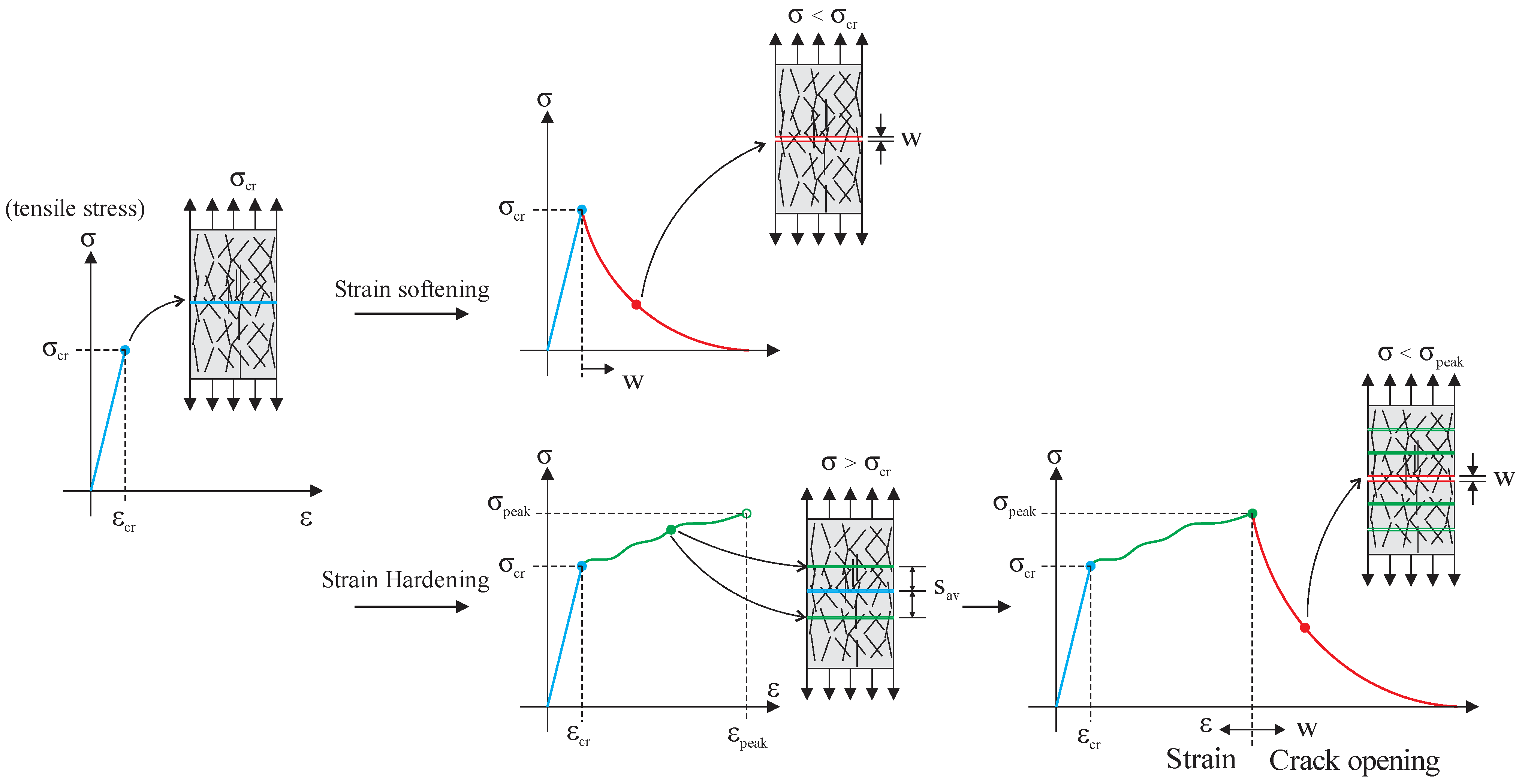

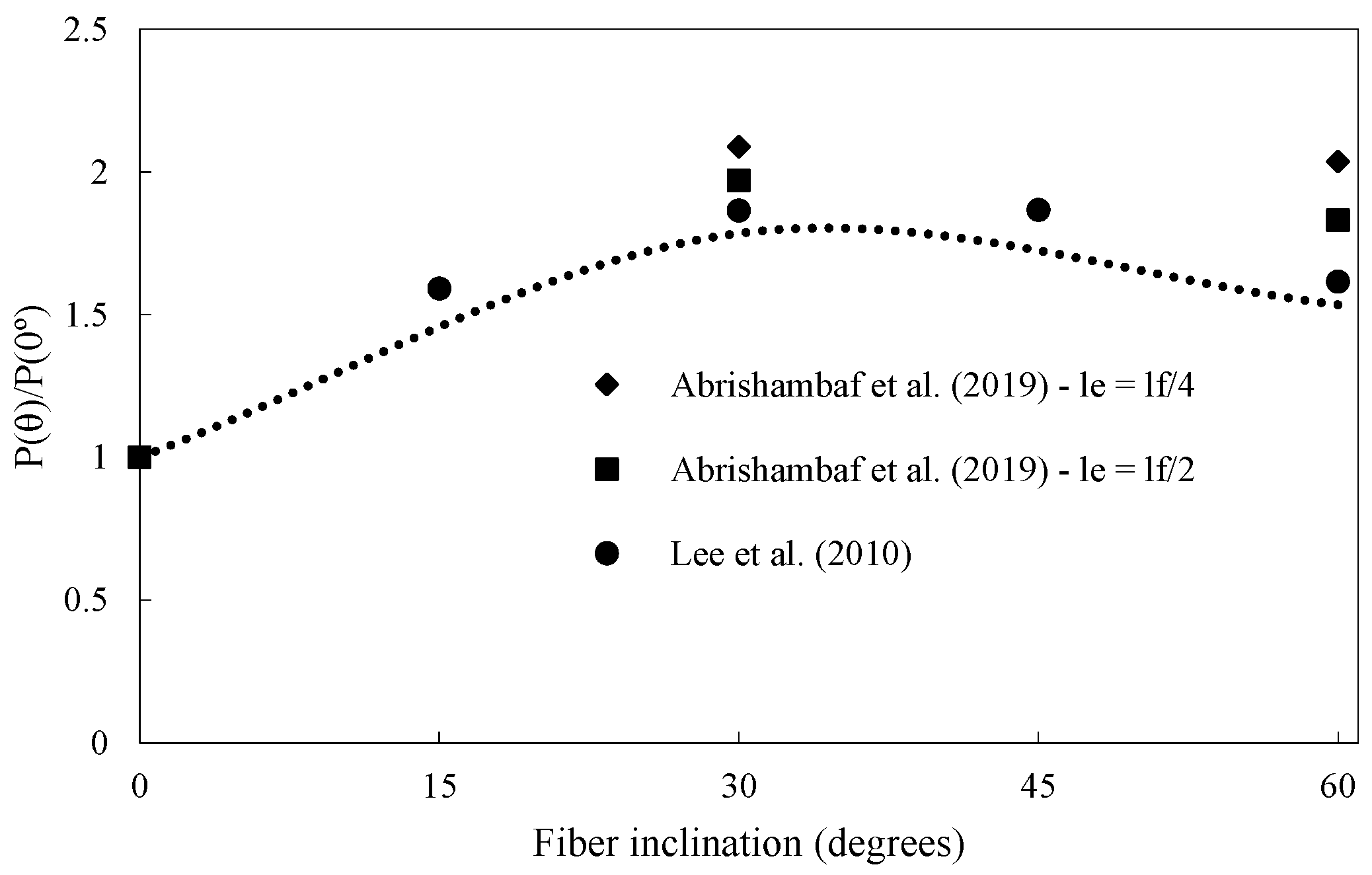
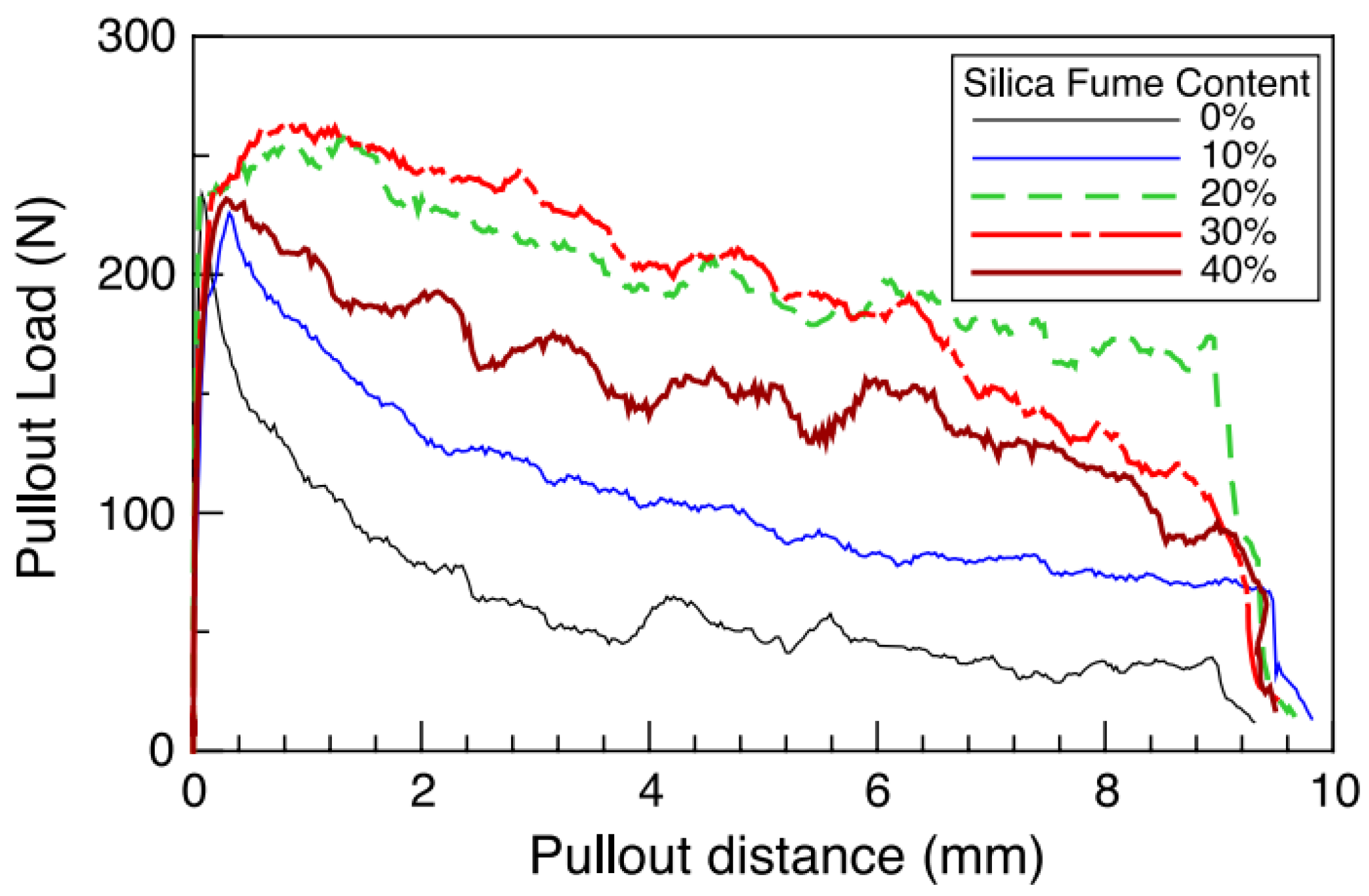


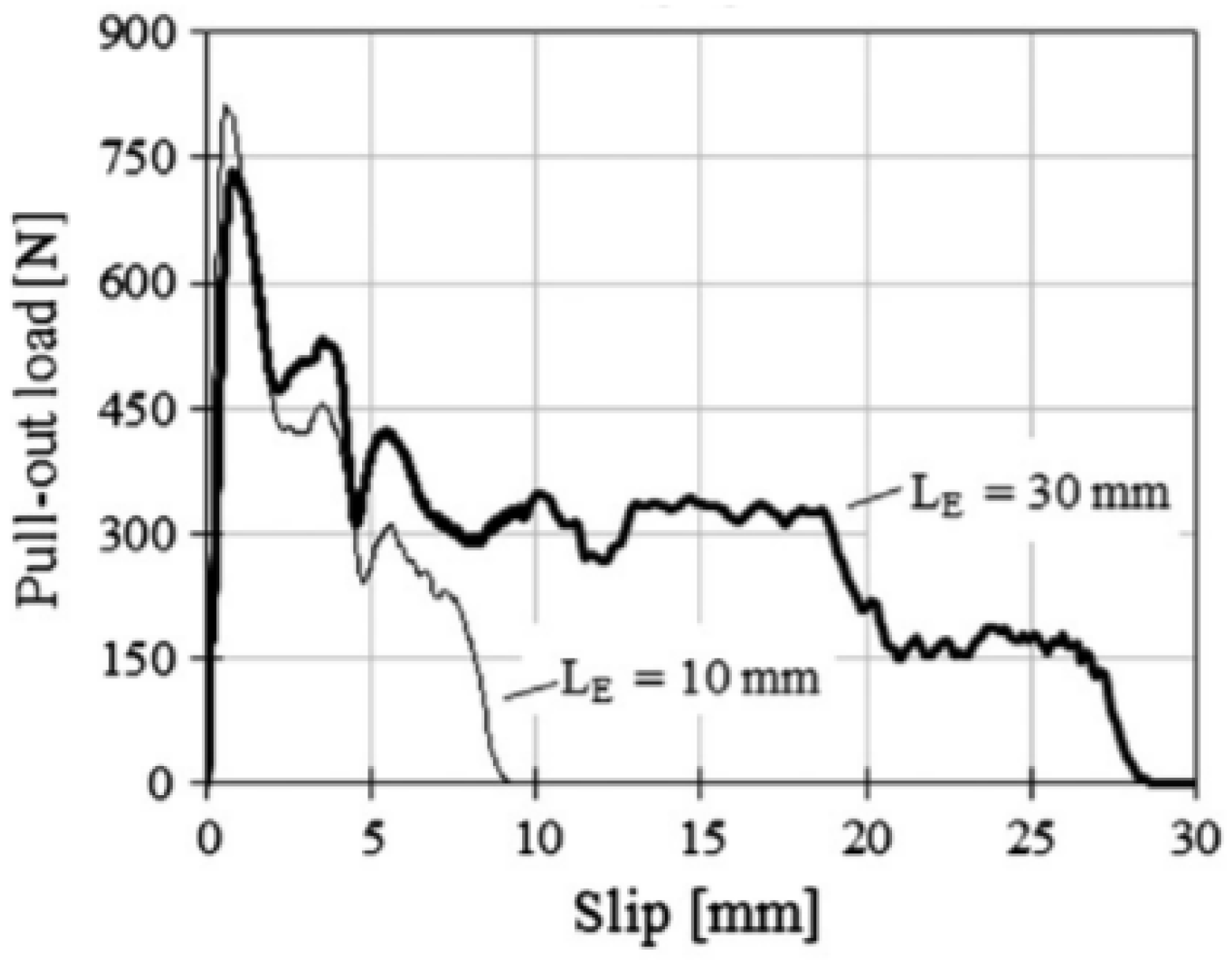

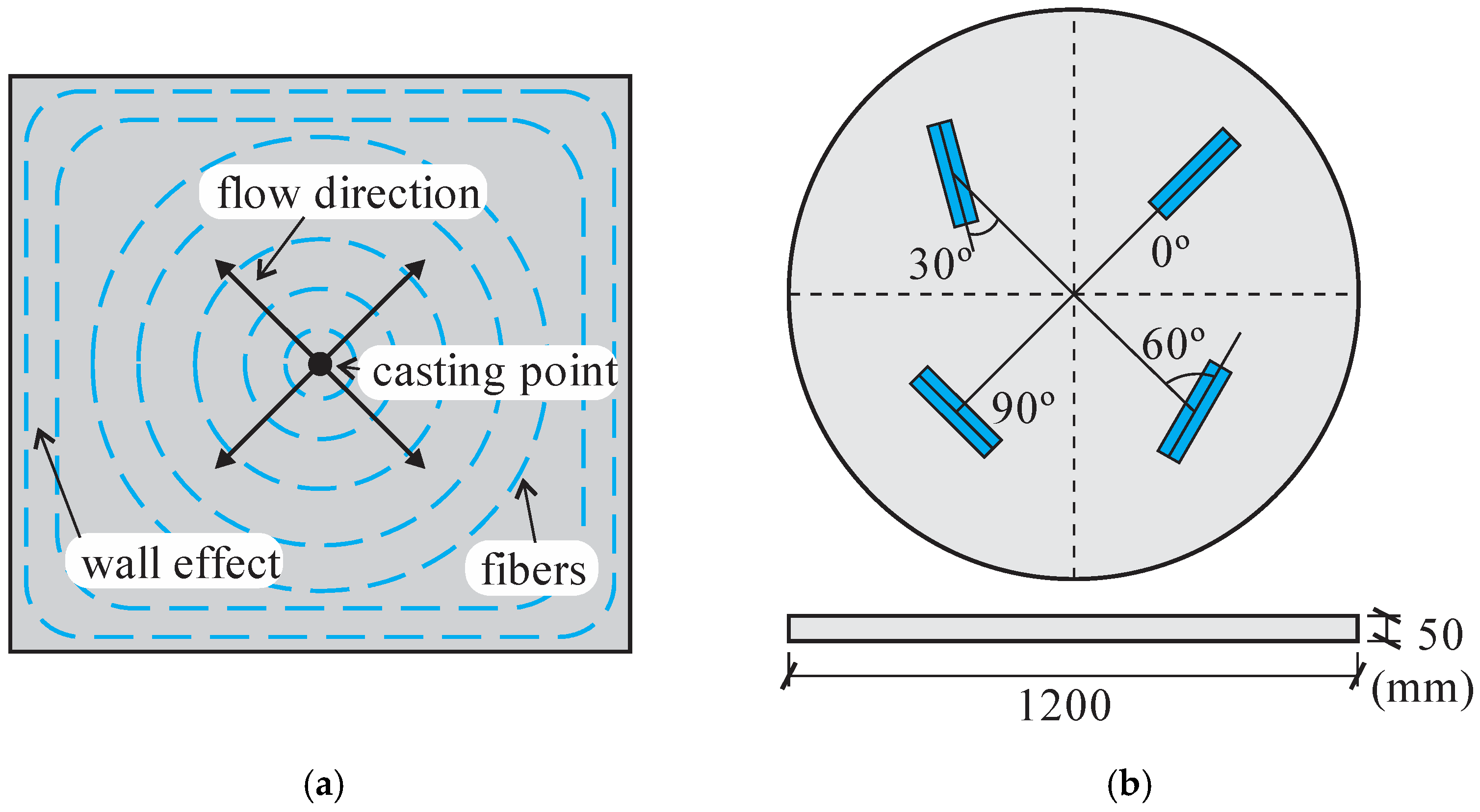
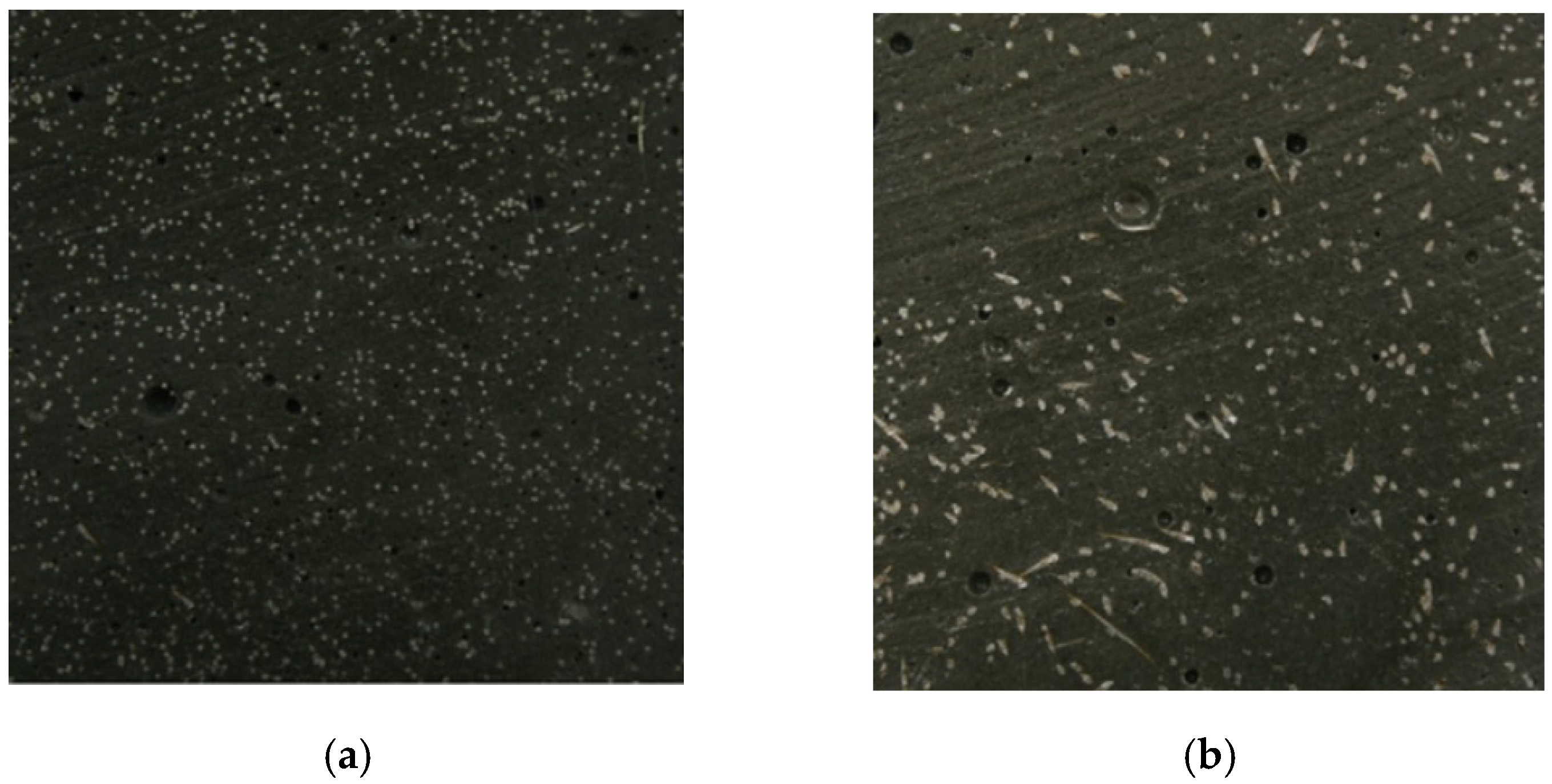
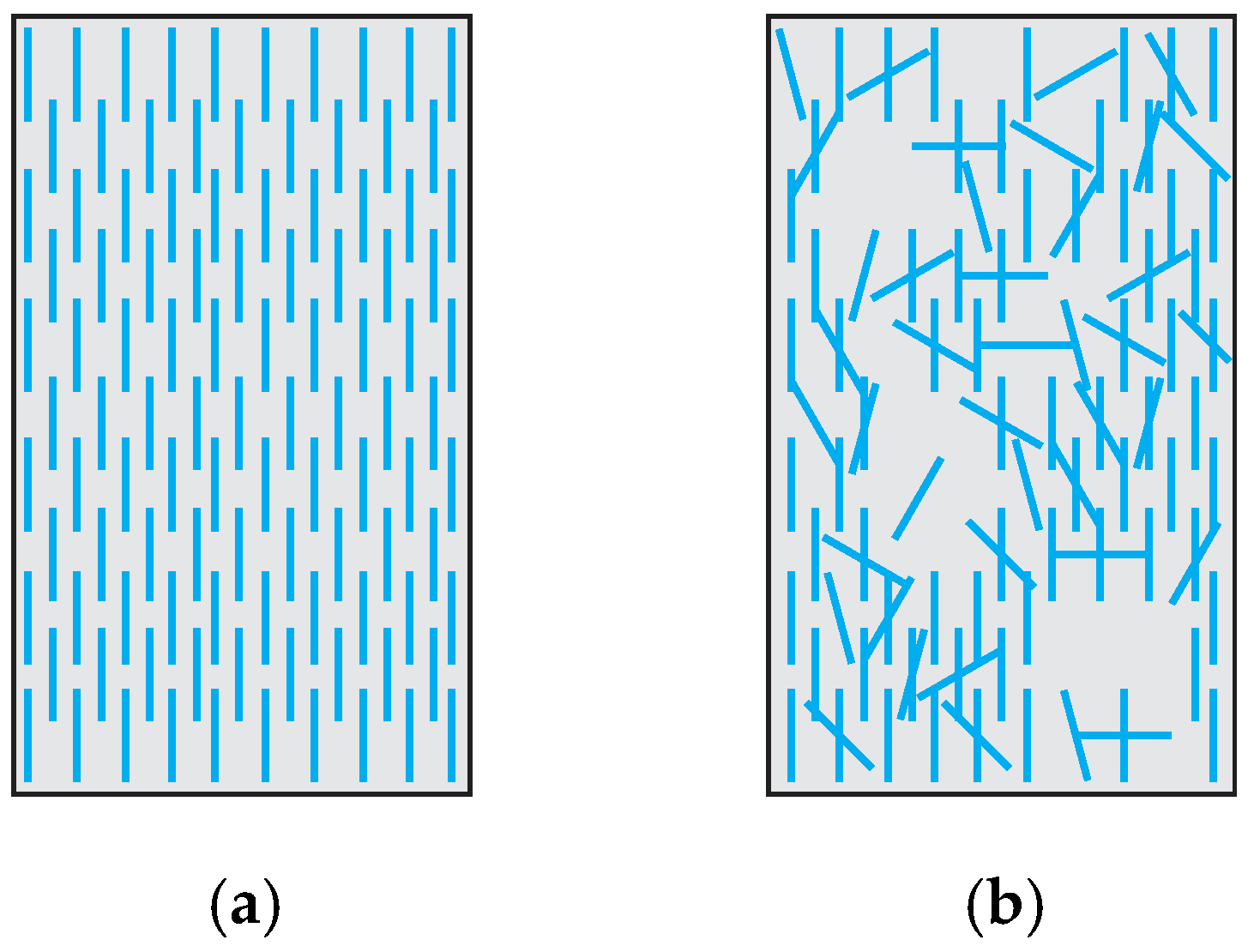
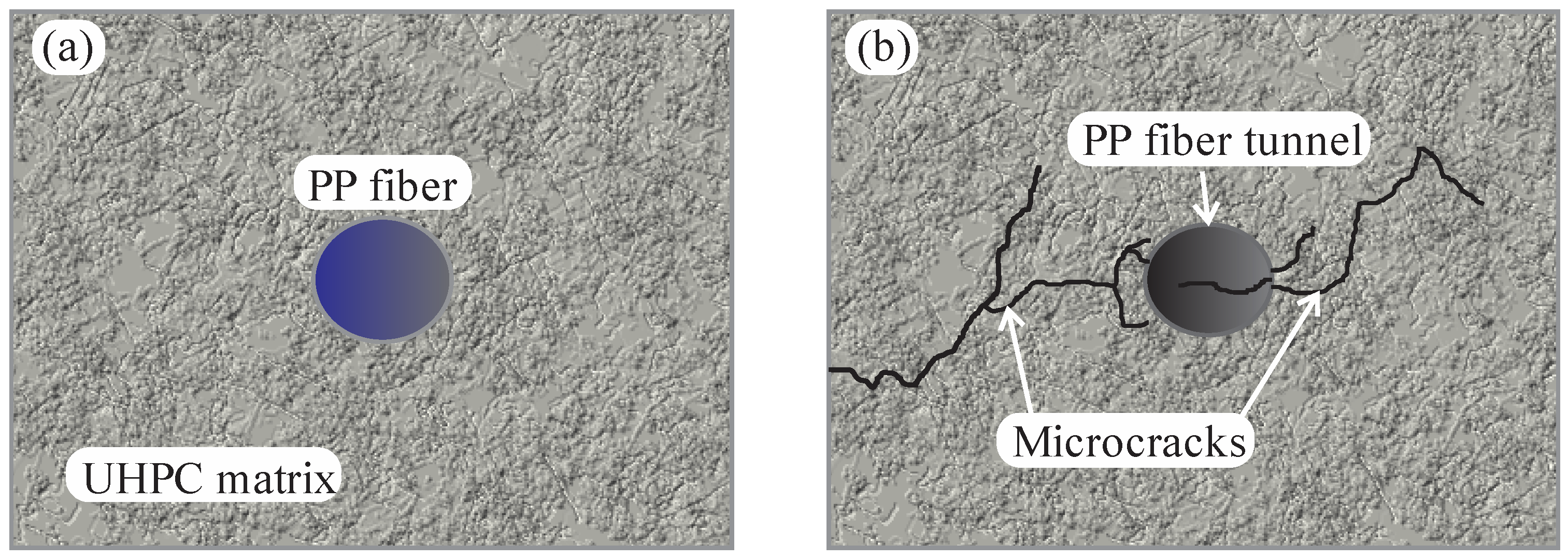
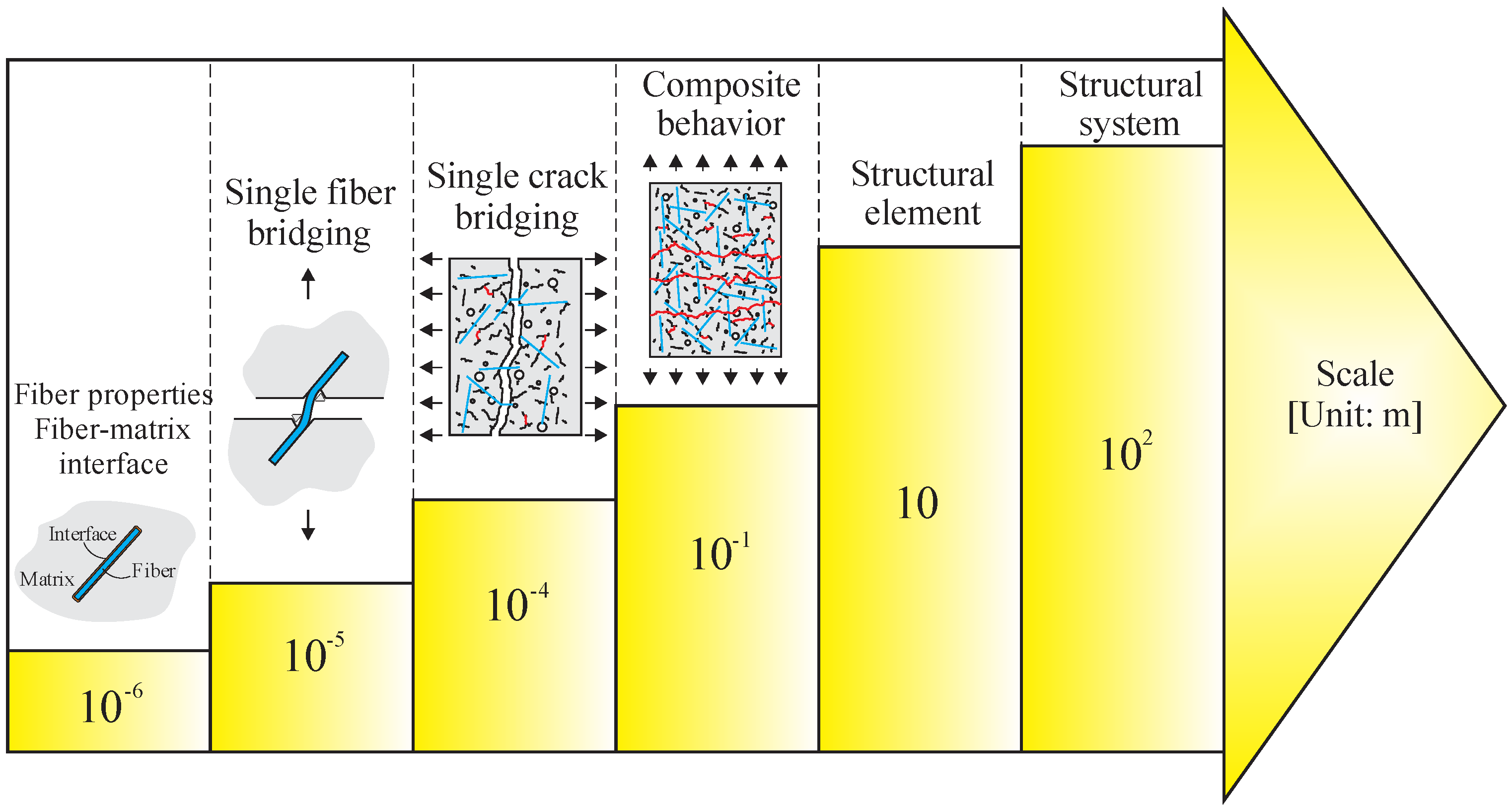
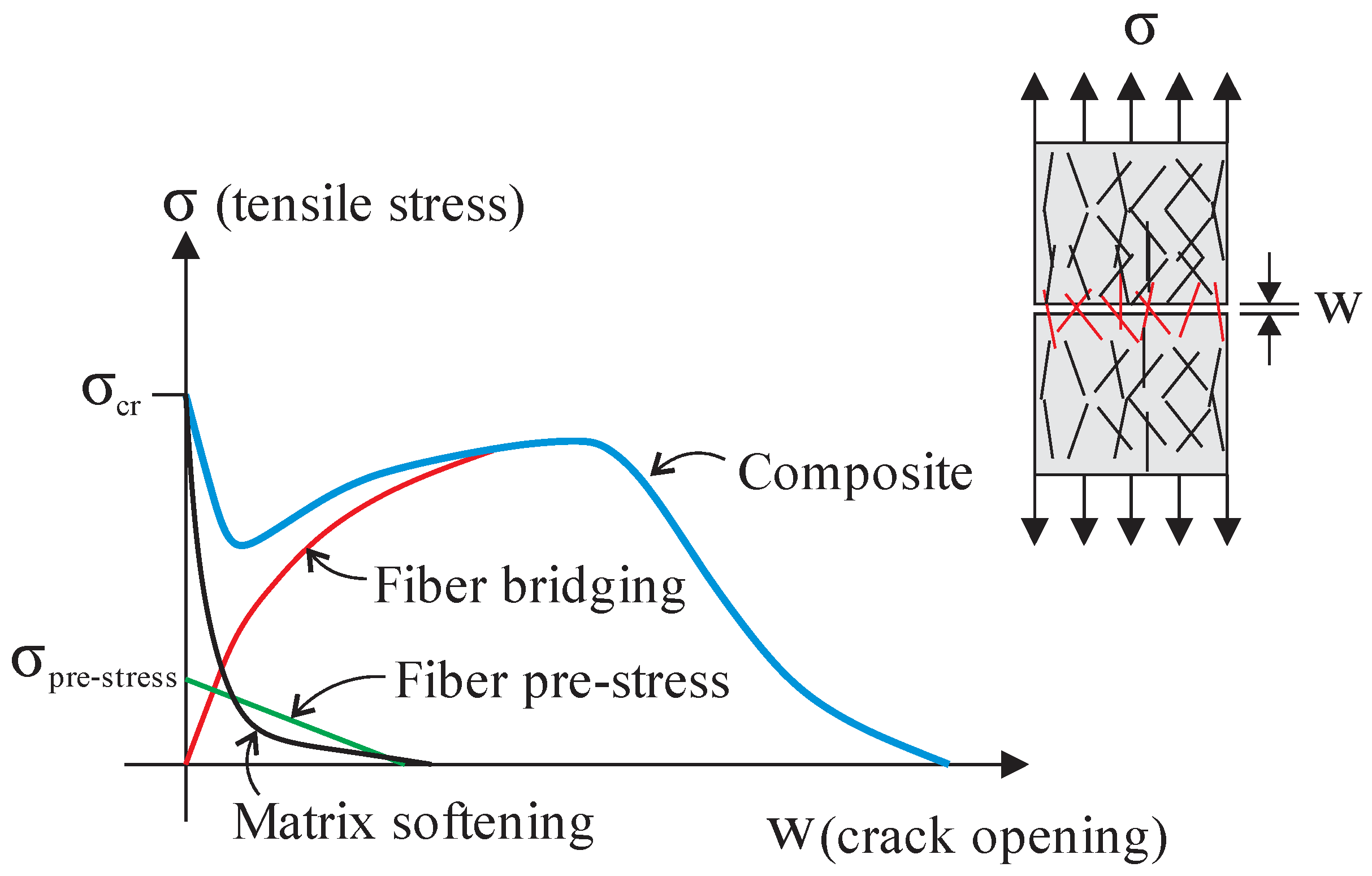
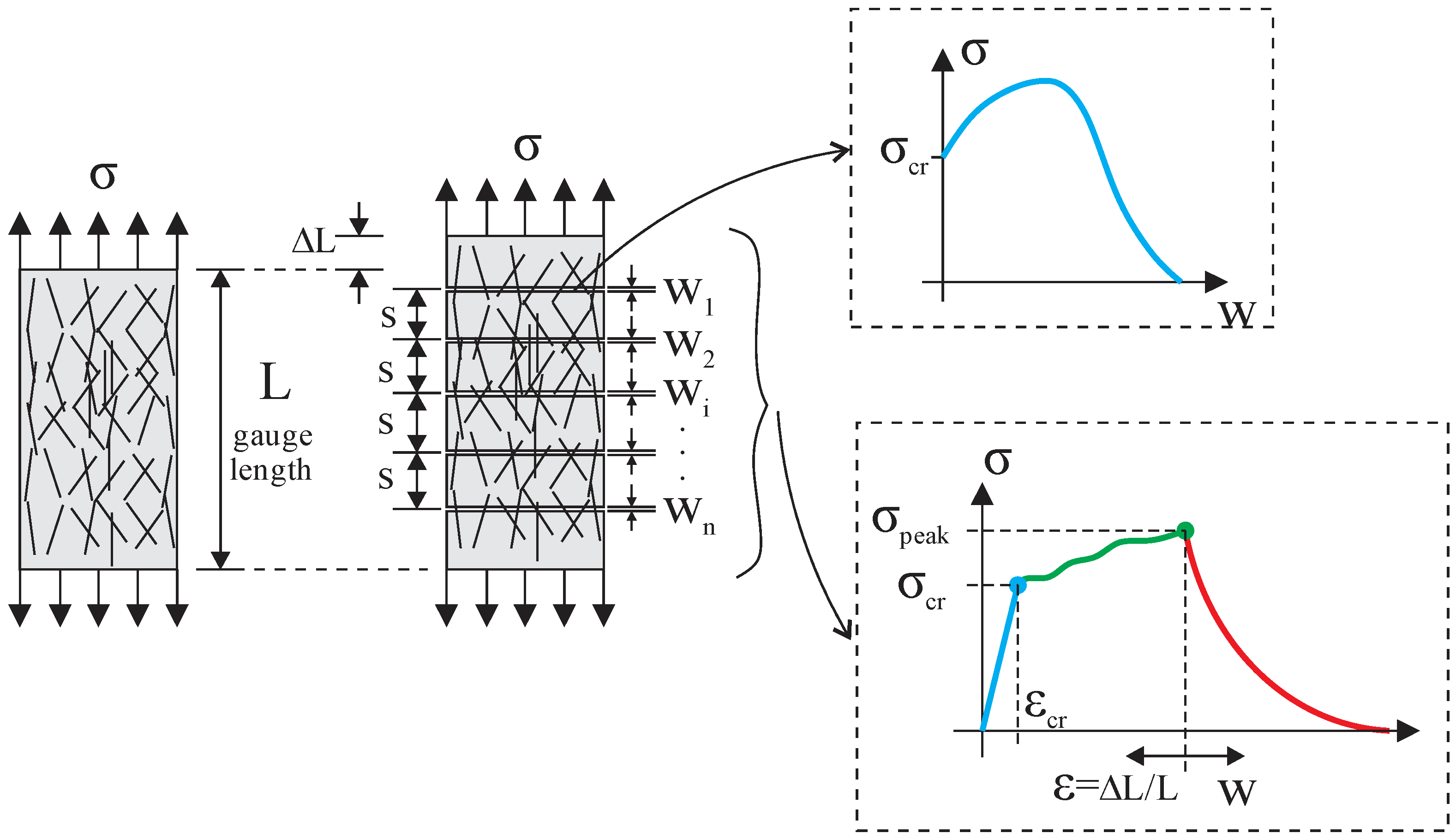
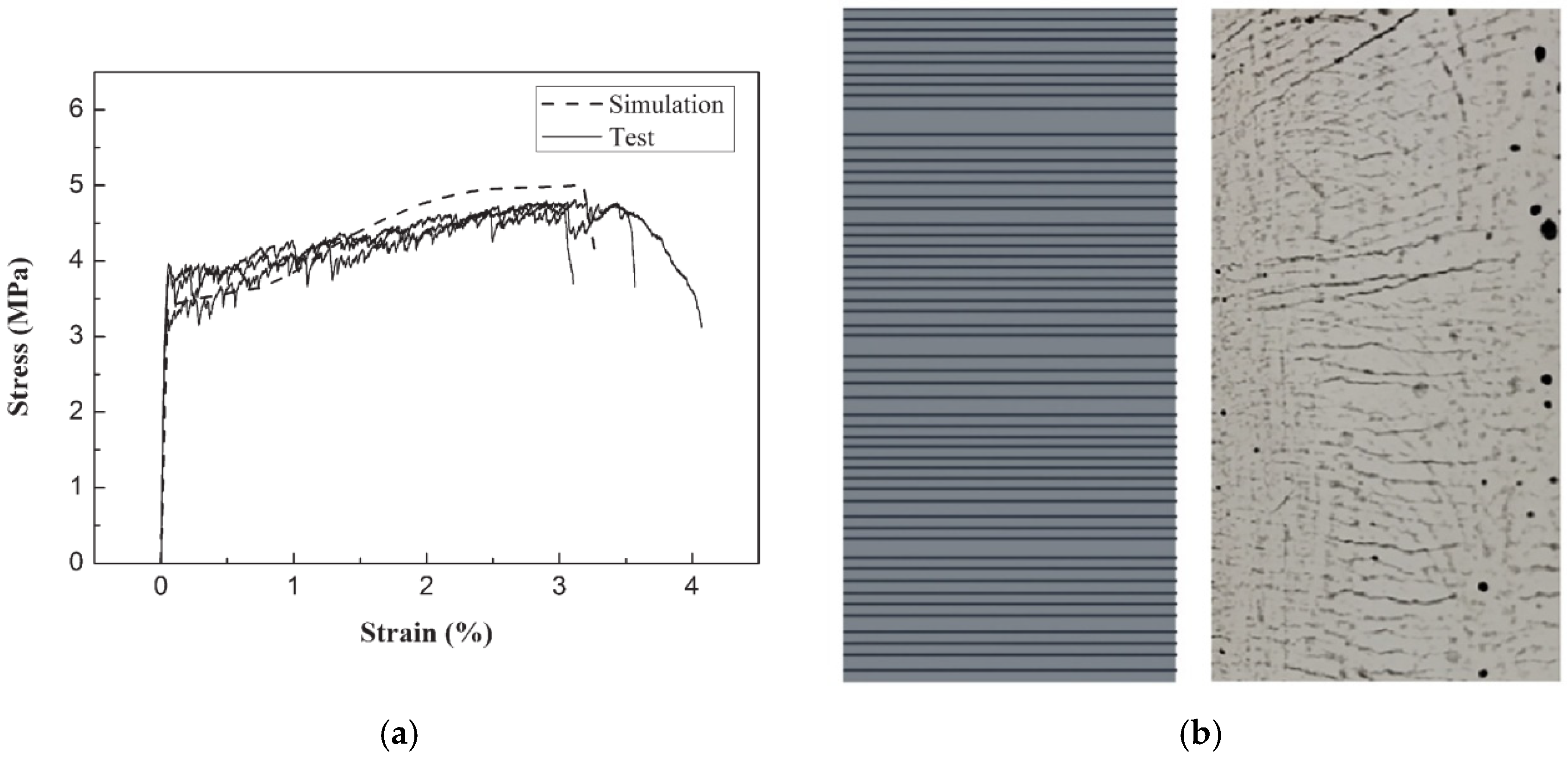
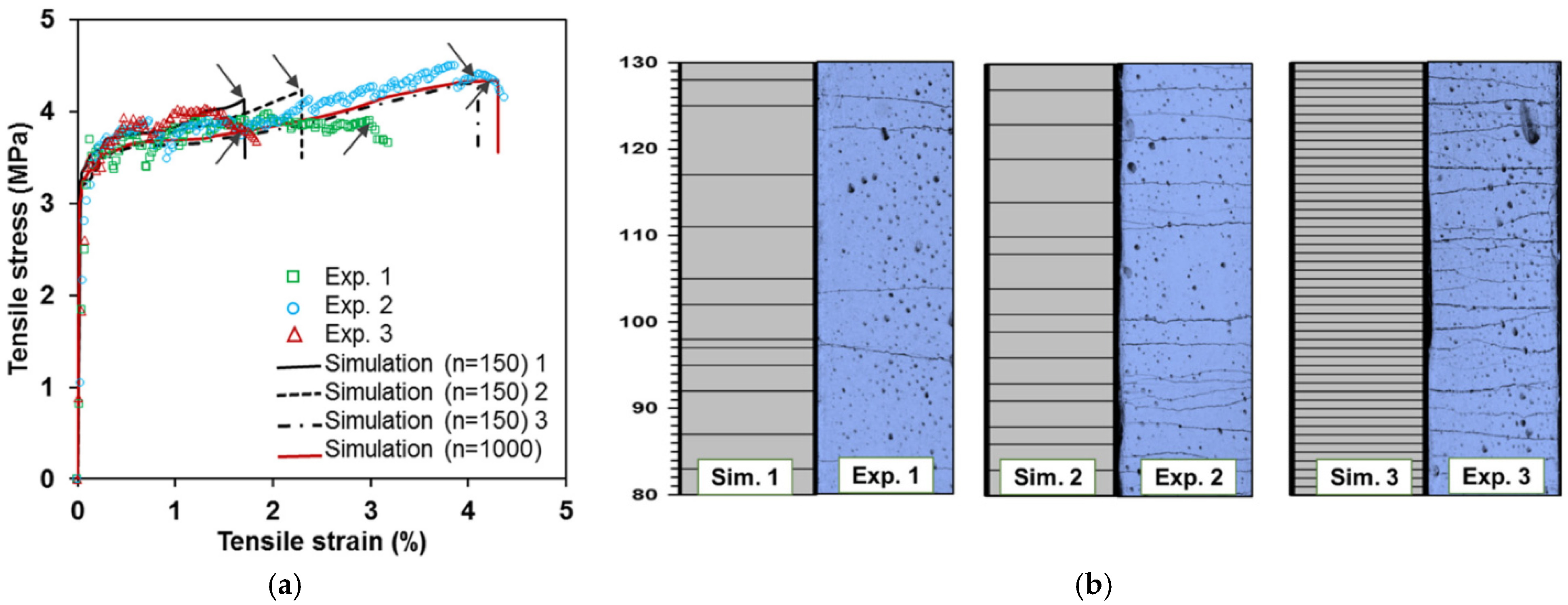
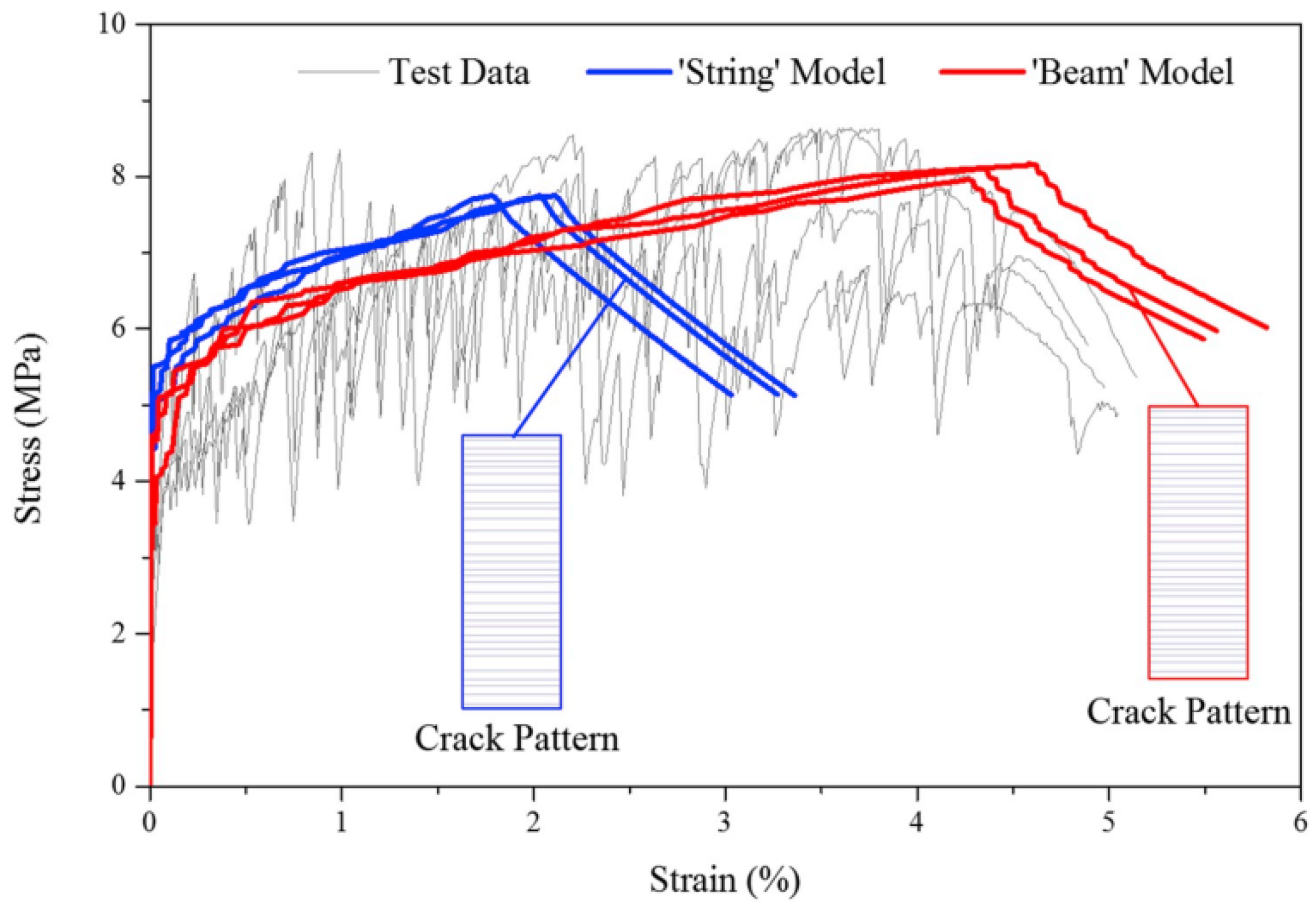
| Author | Comments | ηθ |
|---|---|---|
| Duque and Graybeal (2017) [4] | Sample extracted from the slab perpendicular to flow direction | 0.65 |
| Sample extracted from the slab at 45° to flow direction | 0.74 | |
| Sample extracted from the slab parallel to the flow direction | 0.83 | |
| Conventional molding | 0.85 | |
| Kang and Kim (2011) [50] | The cast position was parallel to the tensile stress direction | 0.645 |
| The cast position was transversal to the tensile stress direction | 0.431 | |
| Abrishambaf, Pimentel, and Nunes (2019) [17] | Well-oriented (mold parallel to the induced electromagnetic field—1.5% of fiber content) | 0.89 |
| Not oriented (mold orthogonal to the induced electromagnetic field—1.5% of fiber content) | 0.71 | |
| Well-oriented (3% of fiber content) | 0.87 | |
| Not oriented (3% of fiber content) | 0.74 |
| ηθ | θmean | |
|---|---|---|
| 1 | 0° | 1.00 |
| 0.966 | 15° | 1.52 |
| 0.866 | 30° | 1.73 |
| 0.707 | 45° | 1.38 |
| 0.500 | 60° | 0.94 |
| 0.259 | 75° | 0.48 |
| 0 | 90° | 0 |
Disclaimer/Publisher’s Note: The statements, opinions and data contained in all publications are solely those of the individual author(s) and contributor(s) and not of MDPI and/or the editor(s). MDPI and/or the editor(s) disclaim responsibility for any injury to people or property resulting from any ideas, methods, instructions or products referred to in the content. |
© 2023 by the authors. Licensee MDPI, Basel, Switzerland. This article is an open access article distributed under the terms and conditions of the Creative Commons Attribution (CC BY) license (https://creativecommons.org/licenses/by/4.0/).
Share and Cite
Ribeiro, P.d.O.; Krahl, P.A.; Carrazedo, R.; Bernardo, L.F.A. Modeling the Tensile Behavior of Fiber-Reinforced Strain-Hardening Cement-Based Composites: A Review. Materials 2023, 16, 3365. https://doi.org/10.3390/ma16093365
Ribeiro PdO, Krahl PA, Carrazedo R, Bernardo LFA. Modeling the Tensile Behavior of Fiber-Reinforced Strain-Hardening Cement-Based Composites: A Review. Materials. 2023; 16(9):3365. https://doi.org/10.3390/ma16093365
Chicago/Turabian StyleRibeiro, Paula de Oliveira, Pablo Augusto Krahl, Ricardo Carrazedo, and Luís Filipe Almeida Bernardo. 2023. "Modeling the Tensile Behavior of Fiber-Reinforced Strain-Hardening Cement-Based Composites: A Review" Materials 16, no. 9: 3365. https://doi.org/10.3390/ma16093365






